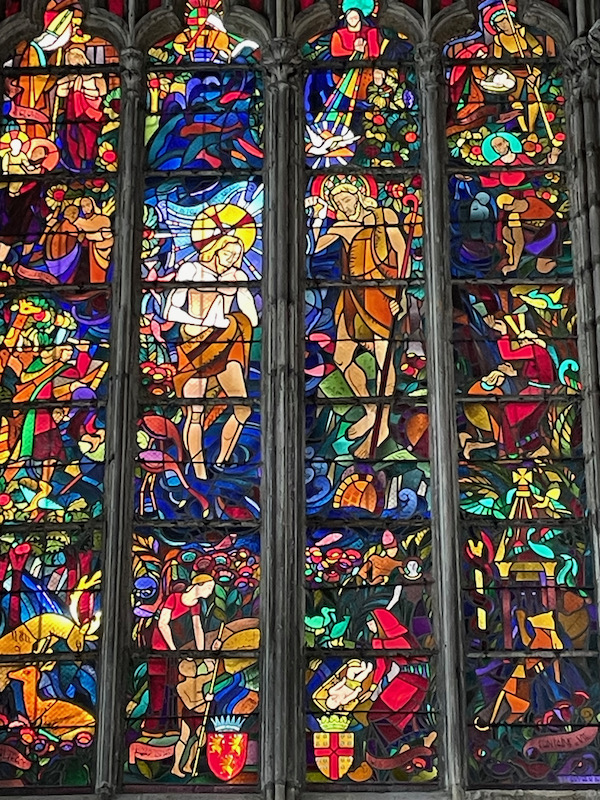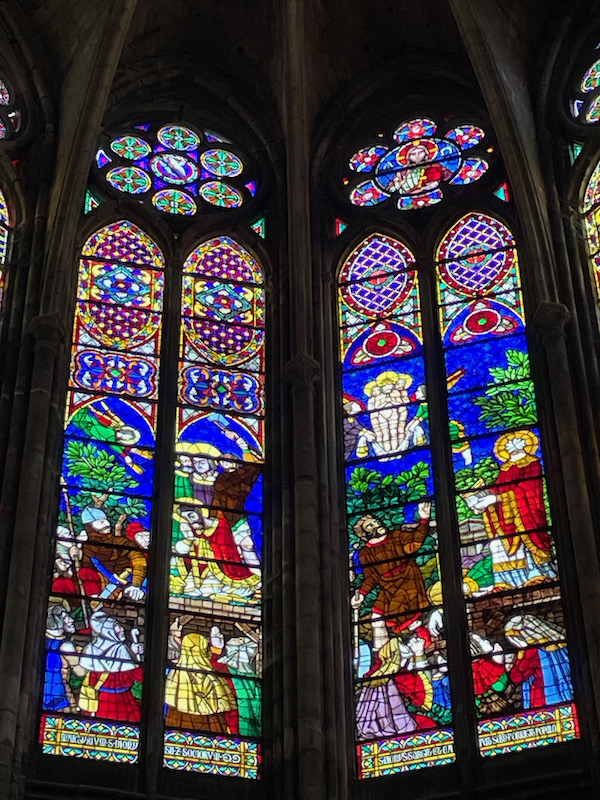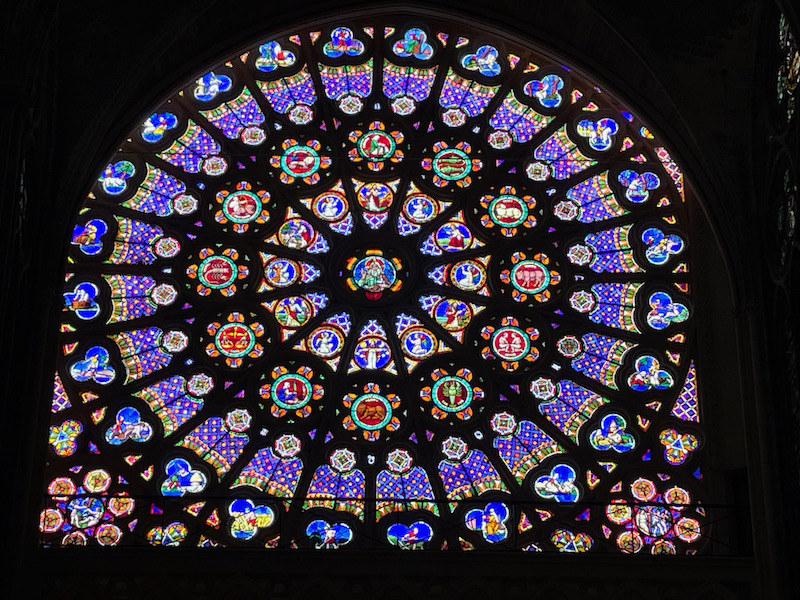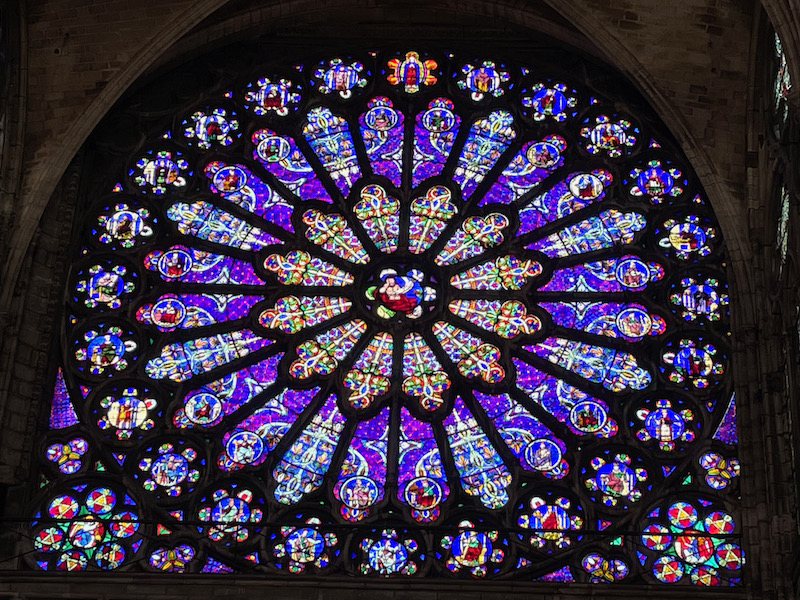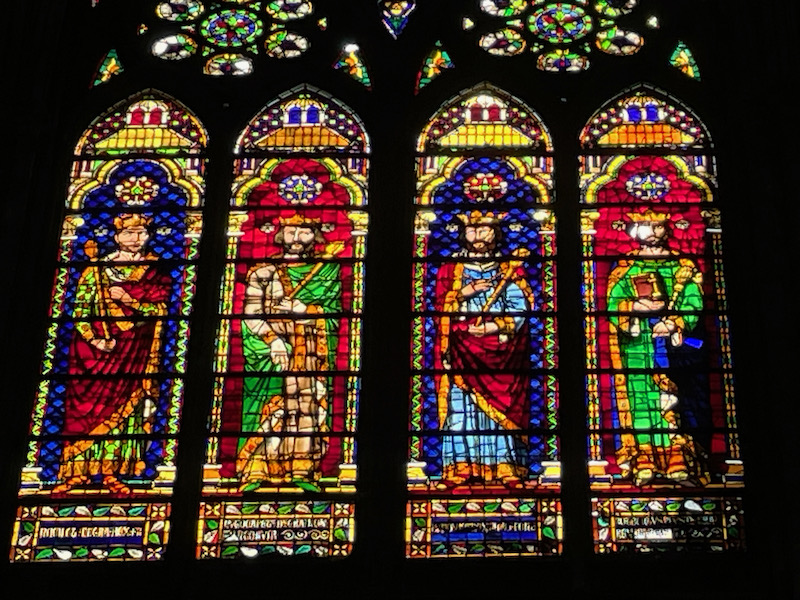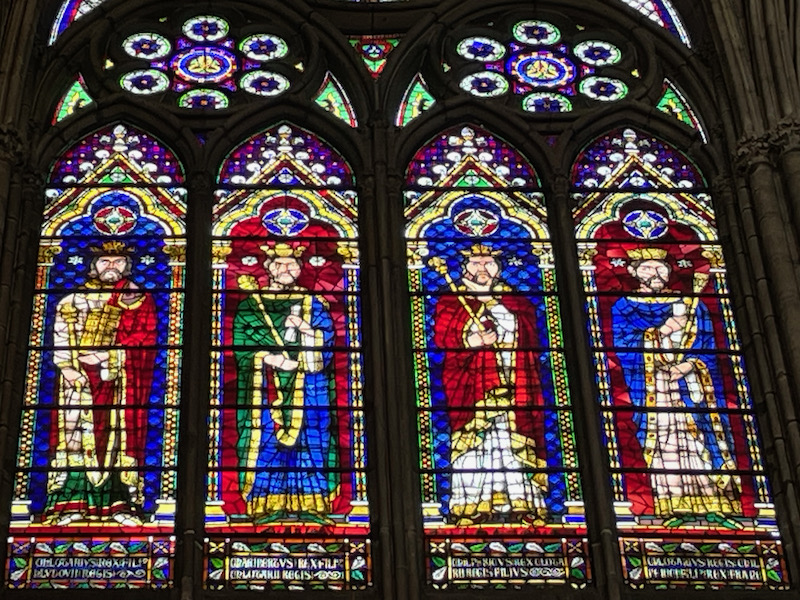Our Blog - Paris Olympics - Day 5 (or really, just the Basilica Saint-Denis)
We already went through the Basilica in 2008, but looking at our blog entry, I took like 6 pictures and gave no commentary whatsoever. Perhaps that was before I had a digital camera and decided to write things about what we see (which some people may actually find excessive). What started out as the royal abbey of Saint-Denis became known as the place where French royalty are buried.
The history here goes back to a Gallo-Roman chapel that was built here between 450 and 475. The popular myth of Saint Denis is that after he was beheaded, he got up, grabbed his head, and walked holding his head in his hands to the place where he wanted to be buried. In many cases, he is depicted holding his severed head. It has become, throughout history, the resting place for royalty in France, starting with Queen Aregunde, wife of Clotaire I and daughter-in-law of Clovis, who died between 573 and 579. Her sarcophagus was discovered in 1959. It was enlarged a few times but only a few columns and marble capitals, which today are in the crypt of the apse, remain of the older constructions of Dagobert and Charlemagne. There was a lot of work done in the 13th century, with the rebuilding of the nave which raised the height of the vaulted ceiling. Kings and their families continued to be buried here for several centuries.
During the French Revolution, a large number of tombs were desecrated (42 kings, 32 queens, 63 princes, 10 servants of the kingdom, as well as around 30 abbots and various religious figures) and their remains thrown into 2 common graves. In 1805, Napoleon created a project to restore the church with most of the restoration work continuing from 1813 to 1879. In 1817, King Louis XVIII dug up these common graves to return them to the crypt of the Basilica. Unfortunately, the lime that was thrown in the pits had destroyed enough that individual skeletons couldn't be identified, so they were put into an ossuary sealed by marble plaques with the names inscribed.
The façade here looks REALLY clean ... this main Western façade was restored between 2012 and 2015 and some of the stained-glass windows are either under restoration or have a restoration planned. It seems a bit lopsided with only one tower on the South side. There used to be a North tower as well, but it was struck by lightning and dismantled in the mid 1840s. There are 3 portals, each with multiple arches and carved tympanum. Up at the top is a large clock, with gilding and the blue background of the Roman numerals contrasting with the white stone exterior.
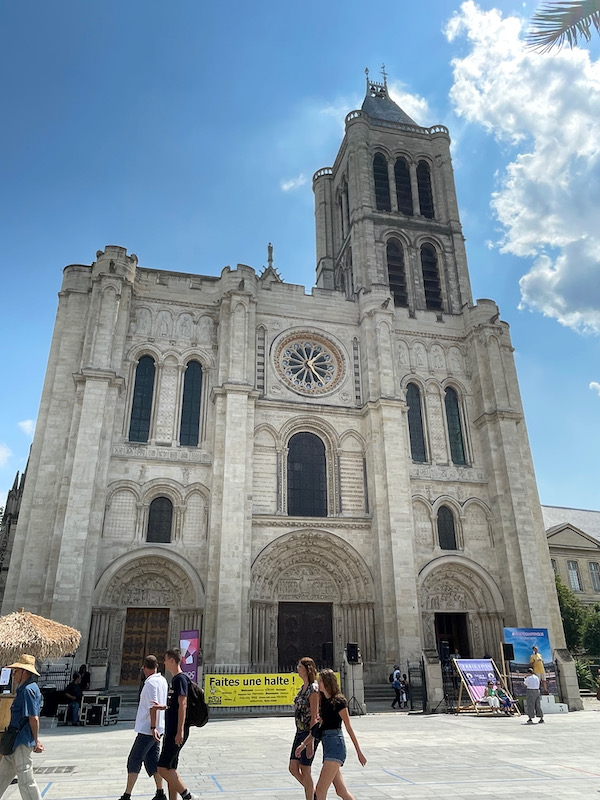
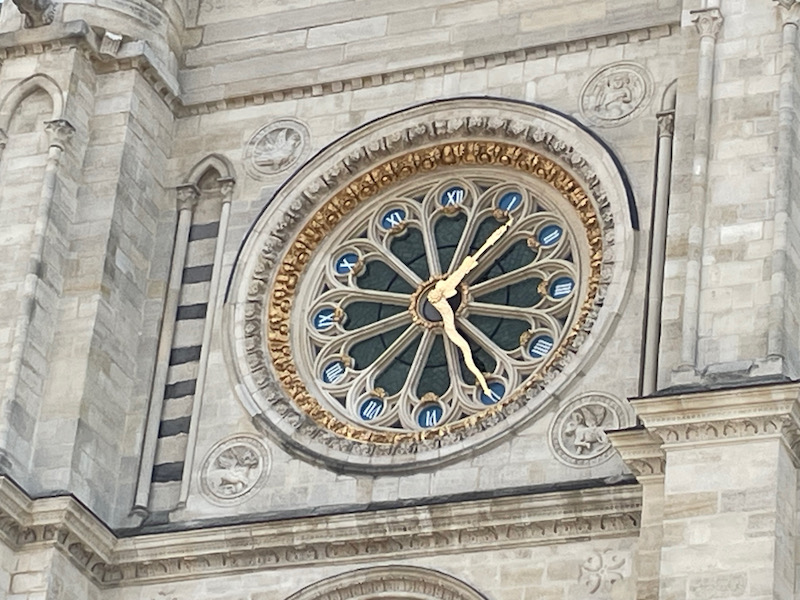
There are 3 portals with the right and left portal tympanum's having scenes with Saint Denis.
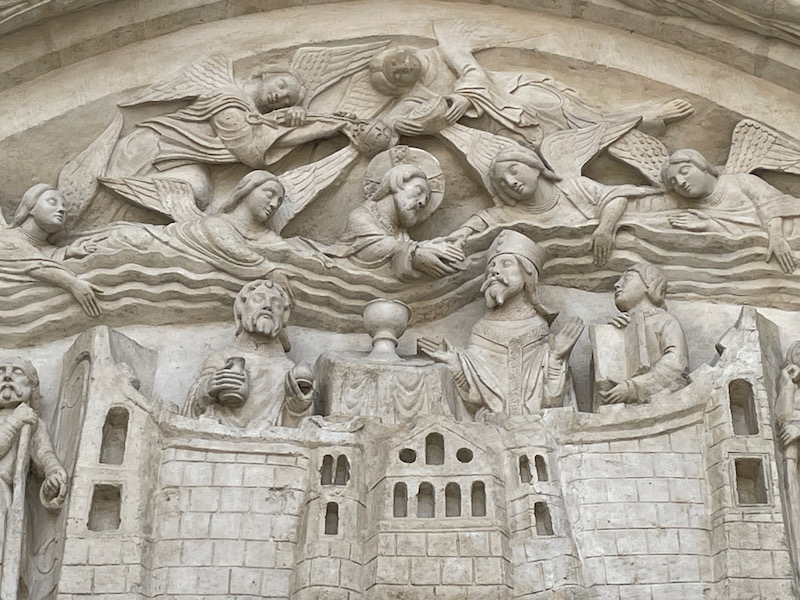
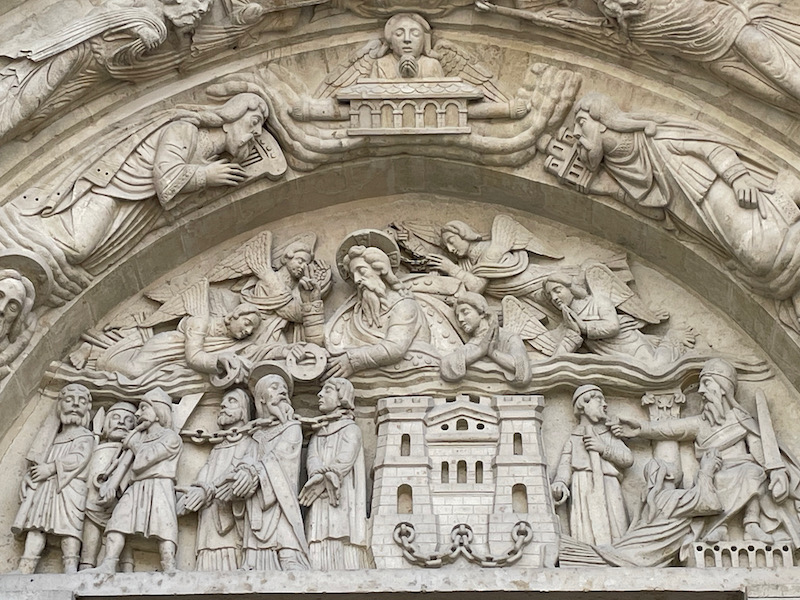
The central portal, like many Basilica's, has the theme of the Last Judgement. At the bottom are the dead emerging from their sarcophagi during the resurrection. Above them, Christ with outstretched arms. On his right (our left), is a banner that reads "Venite benedicti Patris mei" ("Come to me, you blessed by my Father") for those entering heaven and on his left (our right), he rejects the damned: "Discedite a me maledicti" ("Depart from me, you cursed"). On one side are scenes from hell (sinners tormented by demons and monsters) and on the other side are 24 elders of the Apocalypse holding musical instruments.
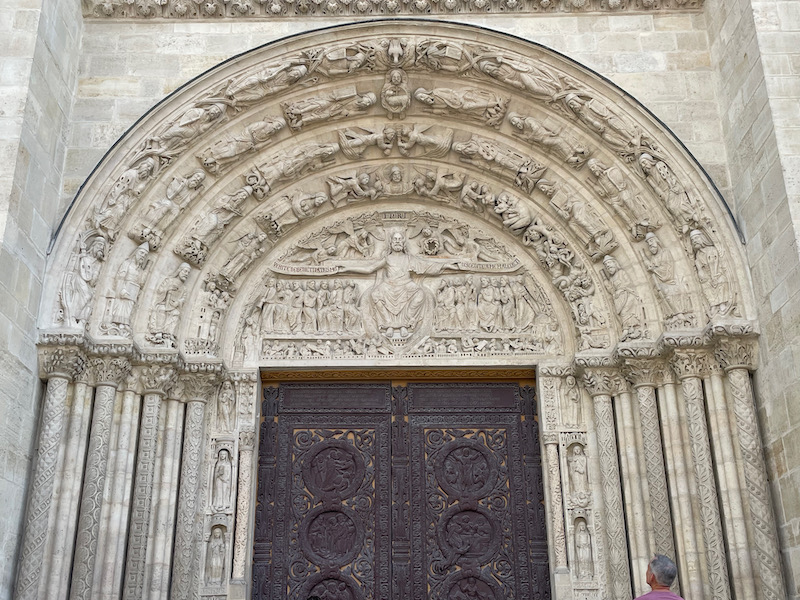
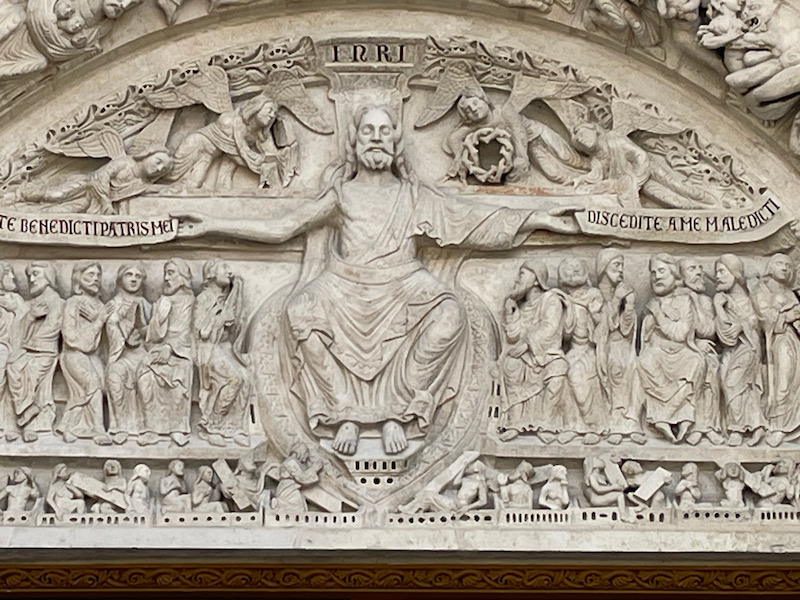
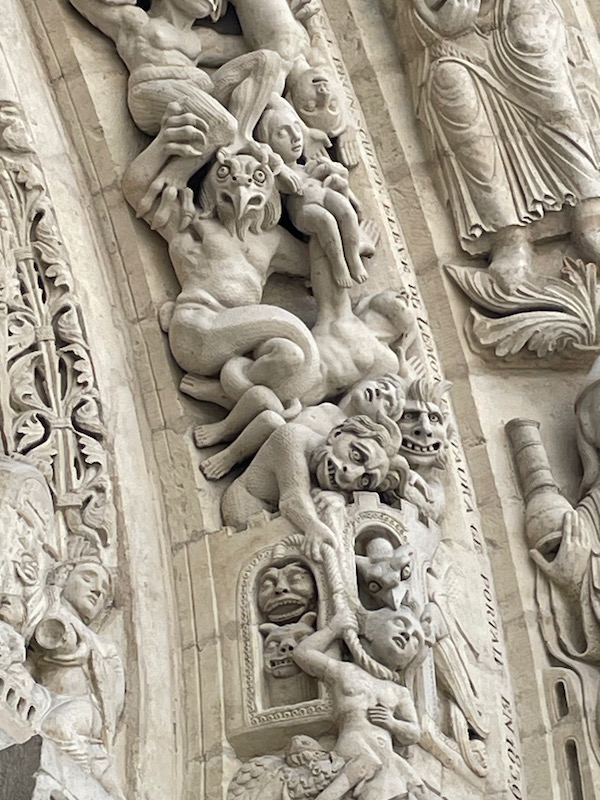
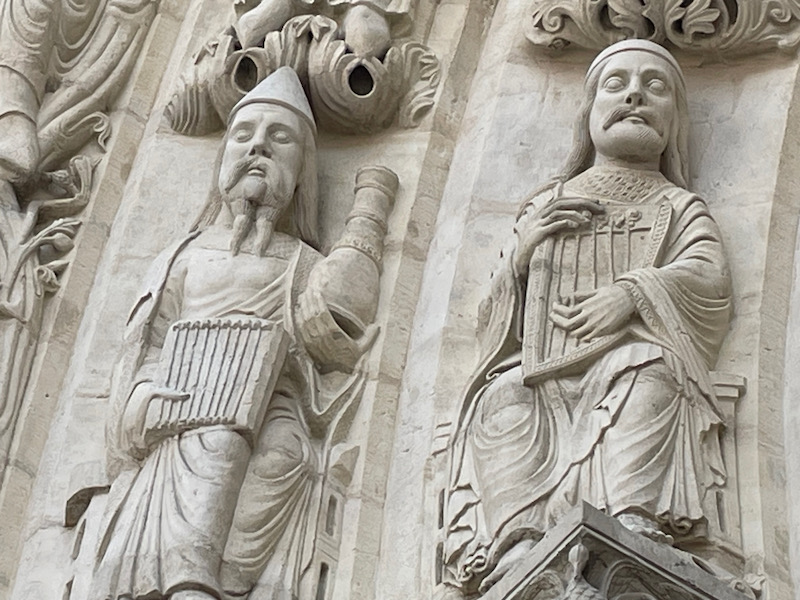
When you walk in, it seems much larger than it appeared from just looking at the front. It is quite long with tall Gothic vaults.
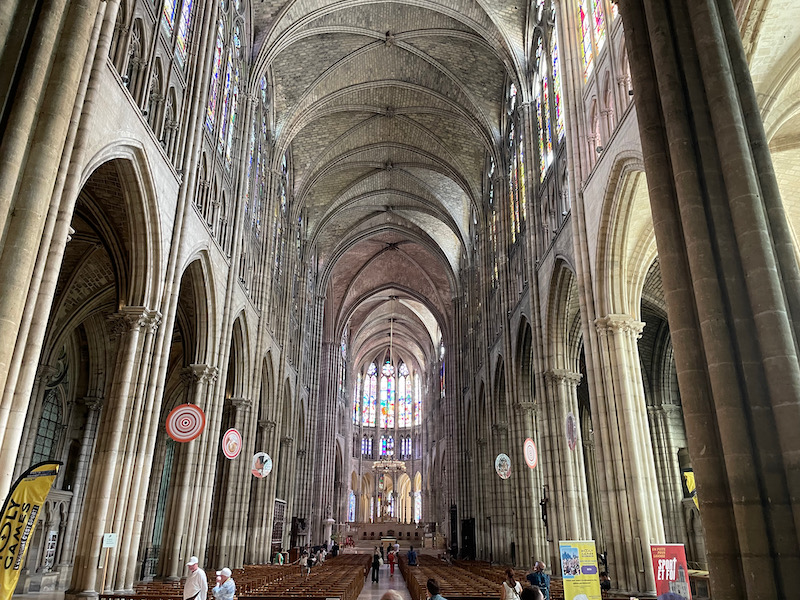
While the main nave of the church is free to view, the royal tombs require a ticket to go through but it is well worth it. I did the audioguide ... or part of the audioguide since it is VERY long and goes through every tomb in lots of detail. This first tomb is that of Francois 1st, who ruled France from 1515 to 1547 and his 1st wife, Claude of France. It is a sort of antique triumphal arch whose base contains bas-reliefs of the Battle of Marignan. In the 16th century, a new model was used in Renaissance tombs. If you look closely at the first picture, you can see their bare feet. On the lower part, the bodies of the sovereigns are presented naked and lifeless. Then on top, you can see the same people kneeling, in prayer, in search of Paradise.
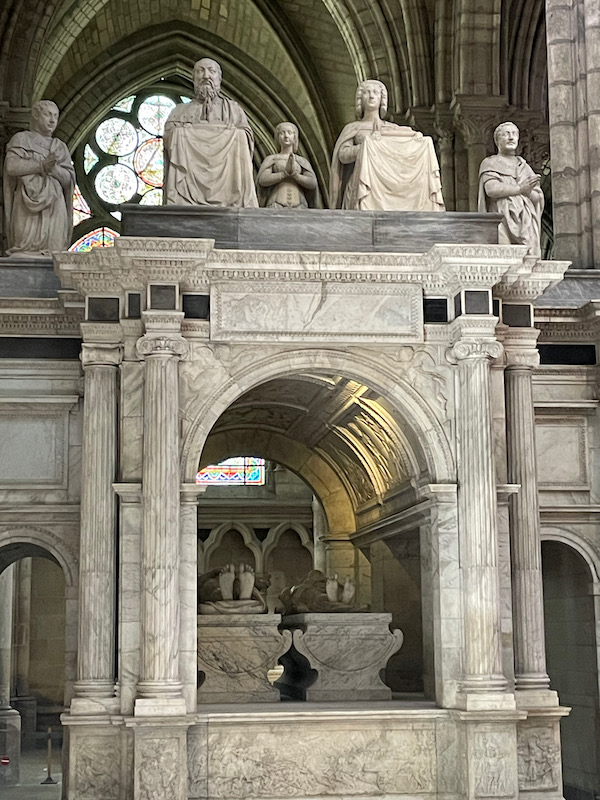
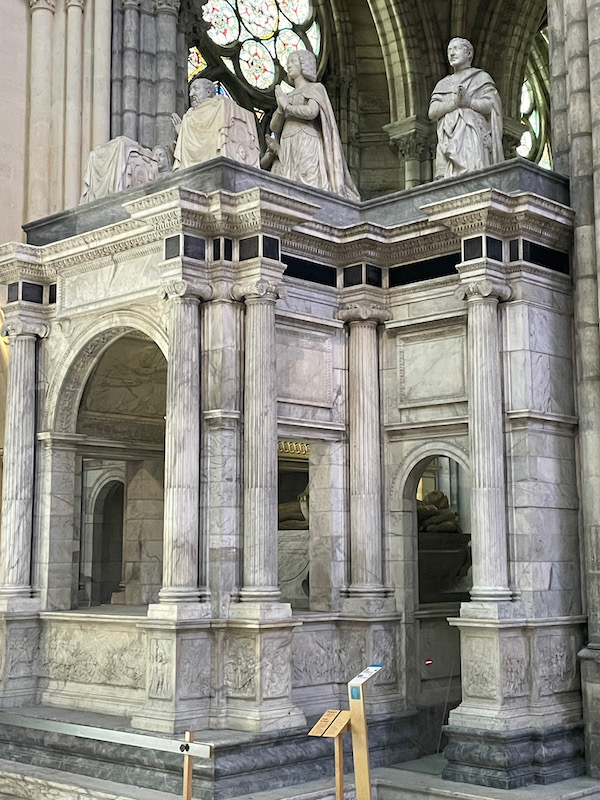
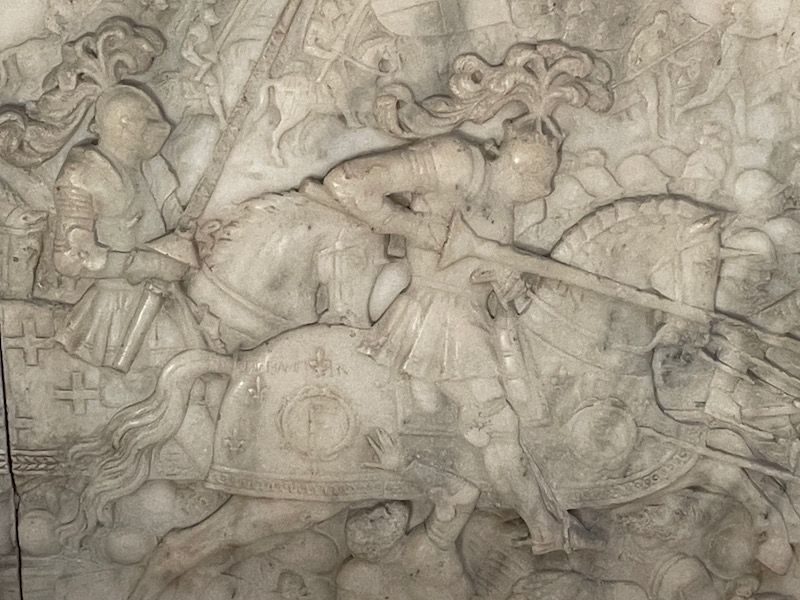
This white marble monument has a few different royals: Charles Duke of Orleans (1394-1465) who was the father of King Louis XII, Louis Duke of Orleans (1372-1407) who was the son of King Charles V, along with his wife Valentine and their son Philippe.
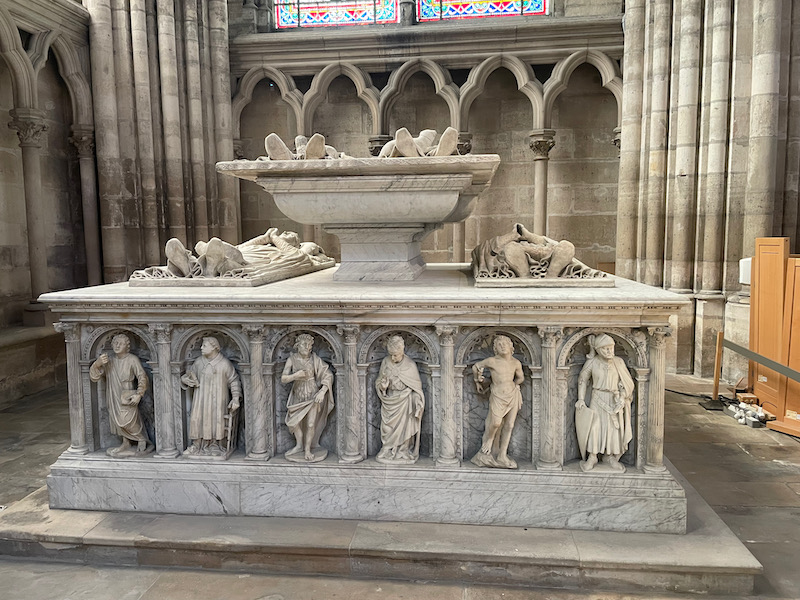
This white marble monument, created in 1556, contains the heart of King Francois 1st.
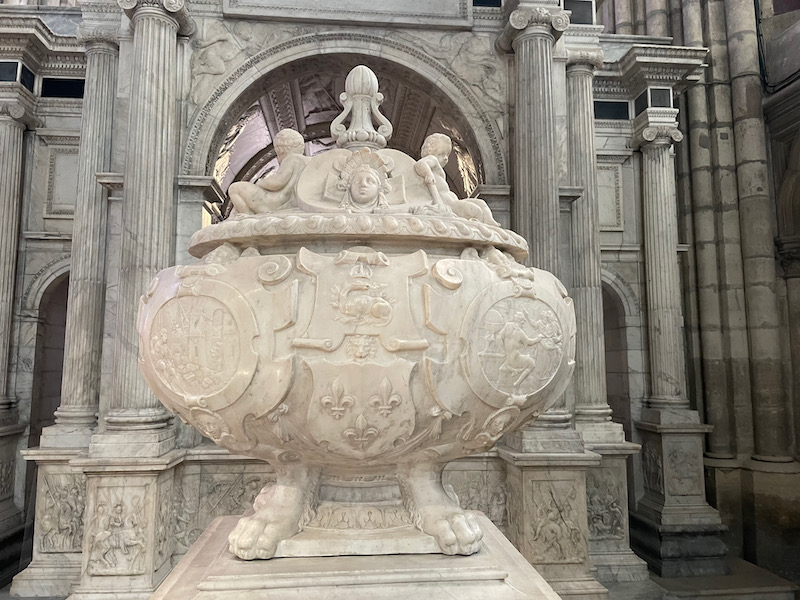
A set of the tombs seem to date from 1263-1264 even though they contain the remains of royalty dating back to the 7th century, including King Louis III (863-882), his brother King Carloman (866-884), and Clovis II (635-657). Some of the tombs will have lions or dogs at the feet of the person, which are symbols of strength and loyalty. All the effigies have their eyes open, a sign of faith in the Resurrection. And the eyes are turned towards the East, towards the rising sun, symbol of the divine light and of Christ.
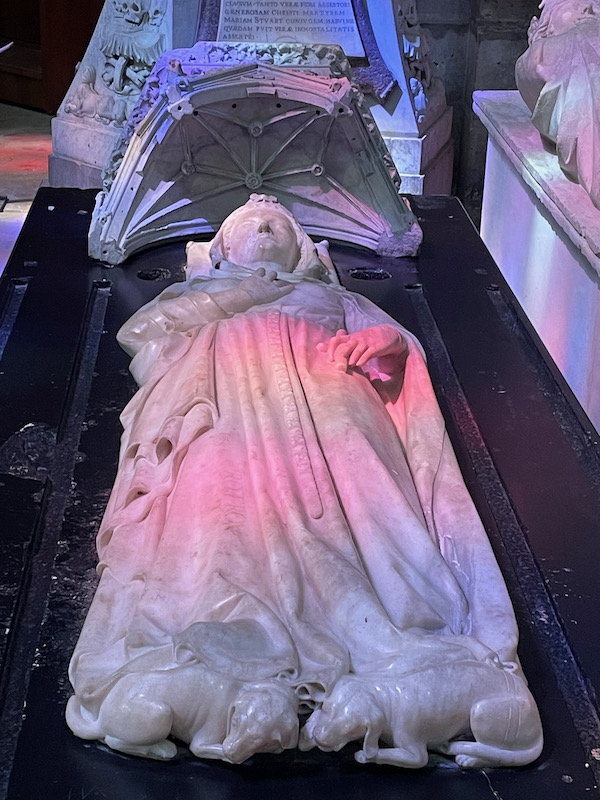
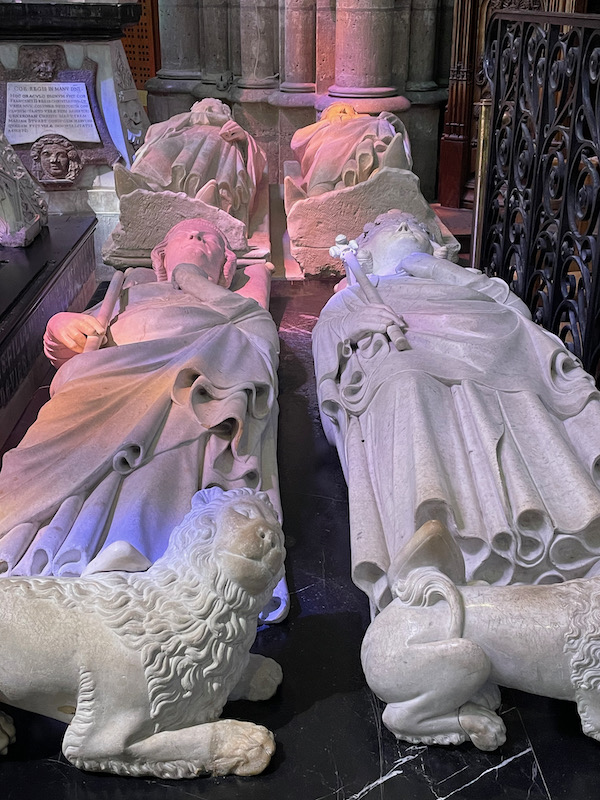
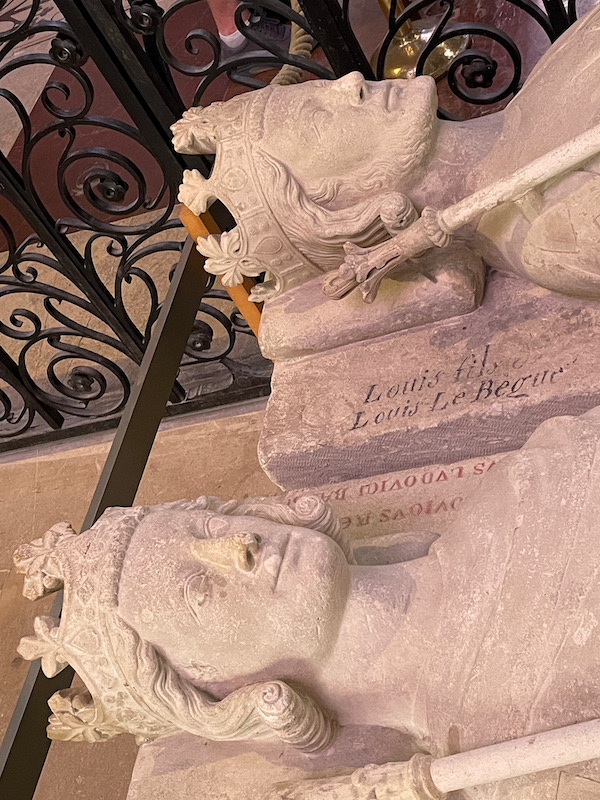
Charles V and his wife, Jeanne of Bourbon. He was king of France from 1364-1380 and the marble monument was done in 1374, 6 years before his death in 1380 ... he planned ahead! Check out the cute puppies at her feet!
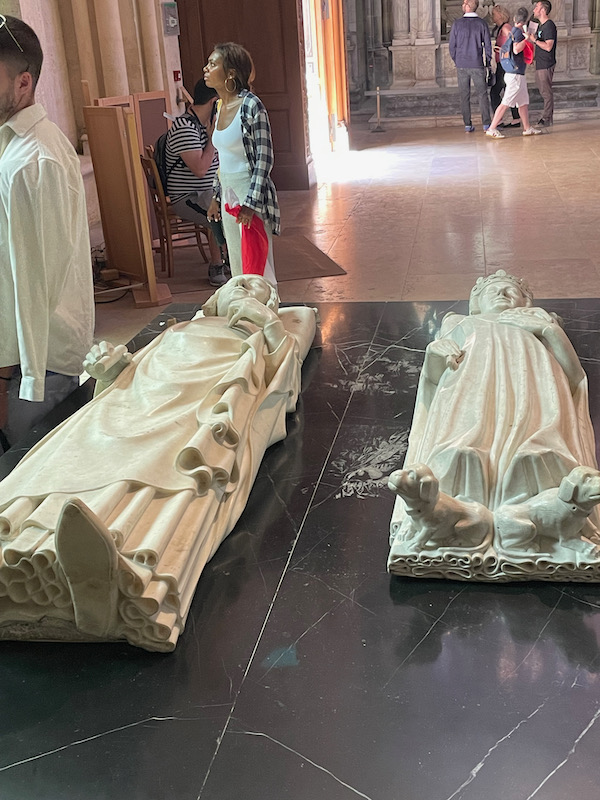
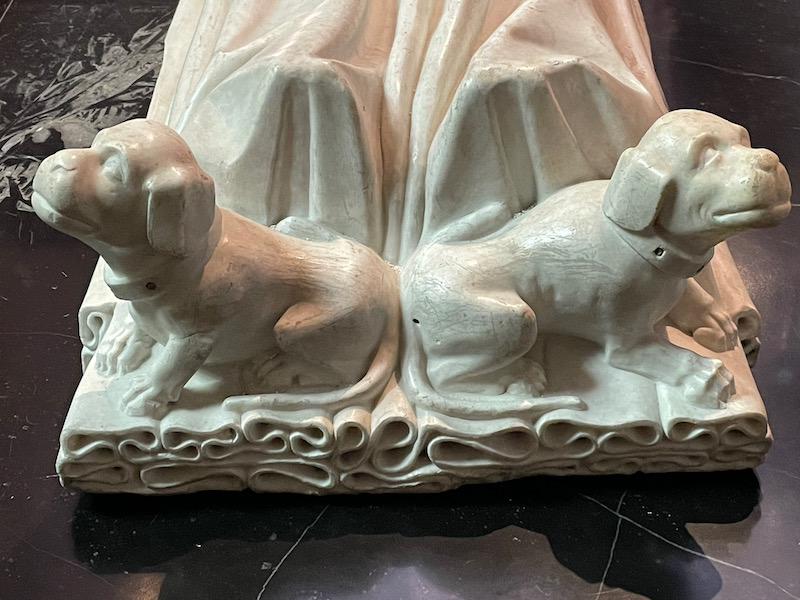
The Crypt dates from the 4th to the 12th centuries. It wasn't terribly interesting, in fact, because most of the impressive tombs are upstairs. But there were a few cool things, like a base of a column from the Carolingian church decorated with leaf motifs, which date back to around 775.
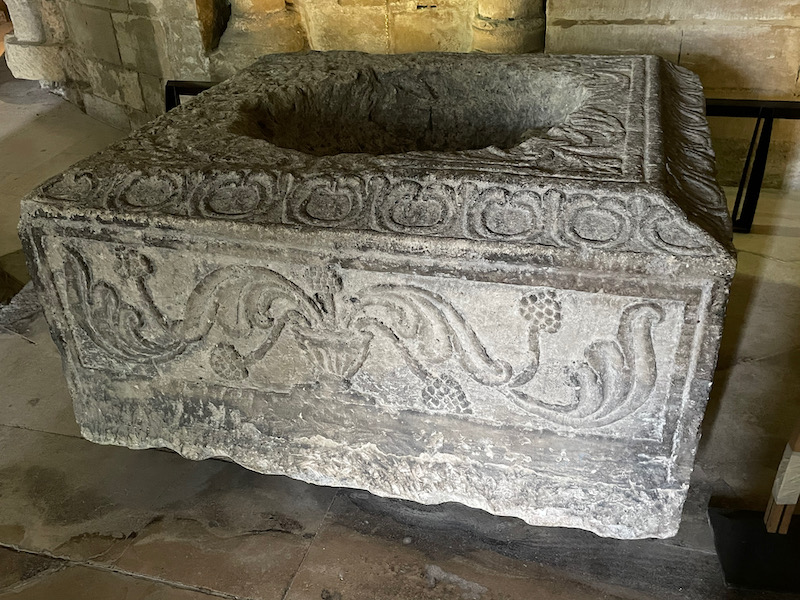
Back in the 1800's, a major excavation took place under the high altar and a bunch of sarcophagi were found. Later excavations found more than 60 tombs, some that dated back to the 3rd century when it would seem there was a necropolis here.
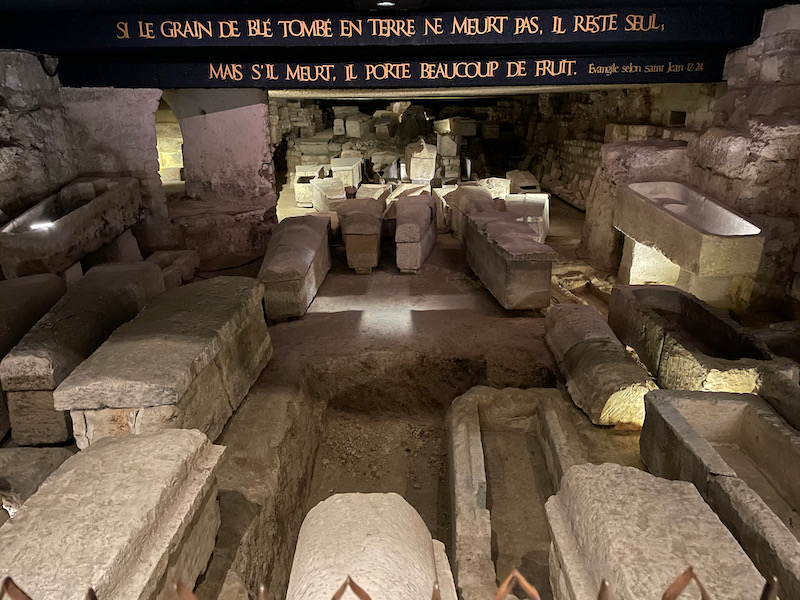
I mentioned that during the French Revolution, a large number of tombs were desecrated. In October 1793, the royal bodies were exhumed from the crypt by the revolutionaries in order to recover the lead from their coffins to make bullets for the war. They were then piled up in 2 mass graves in the cemetery, near the church. In 1817, King Louis XVIII had the bones found and buried in an ossuary in the crypt. There are 2 large black panels with the names and dates of these sovereigns, dating back to the 1st dynasty.
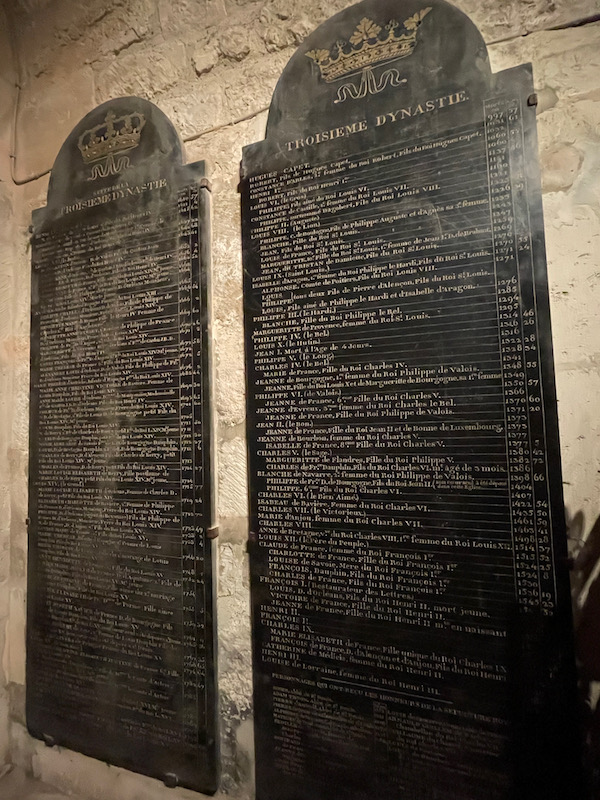
In some cases, there are both tombs (with remains) and funerary statues within the church for the same person. One example is Louis XVI and his wife, Marie-Antoinette. After their executions, their bodies were put in a common grave in Paris. Her remains and those of Louis XVI were exhumed in 1815 and moved here. Their bodies are in the crypt in these black graves but there are also funerary statues showing them in life-like poses up in the church.
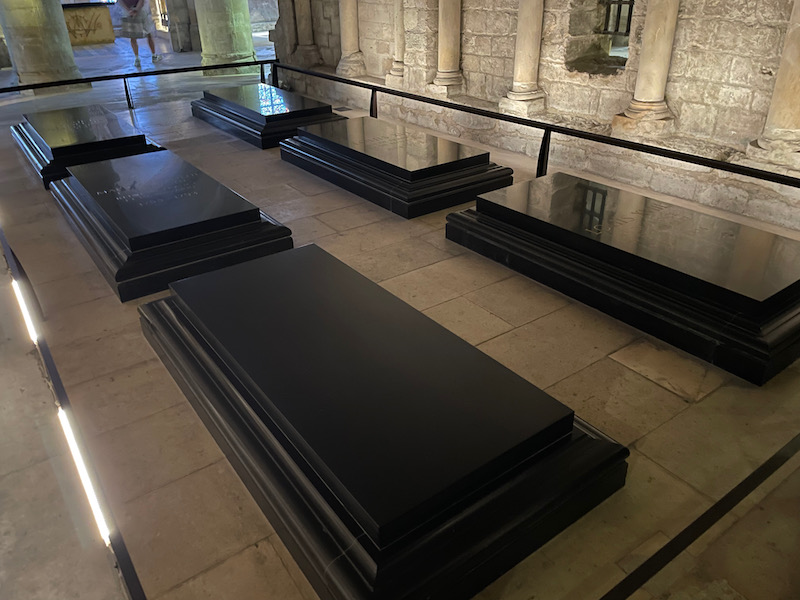
Another is the funerary monument of Dagobert I, king of the Franks from 629 to 639. He was the first king to be buried in the basilica and is considered the founder of the abbey. The monks of the abbey paid him homage in the 13th century by creating a tomb of exceptional dimensions, today located in the sanctuary. The recumbent figure of the king, lying on his left side, looks towards the site of the original burial place of Saint Denis. He is surrounded by the statues of Nanthilde, his wife (on the left), and their son Clovis II (on the right).
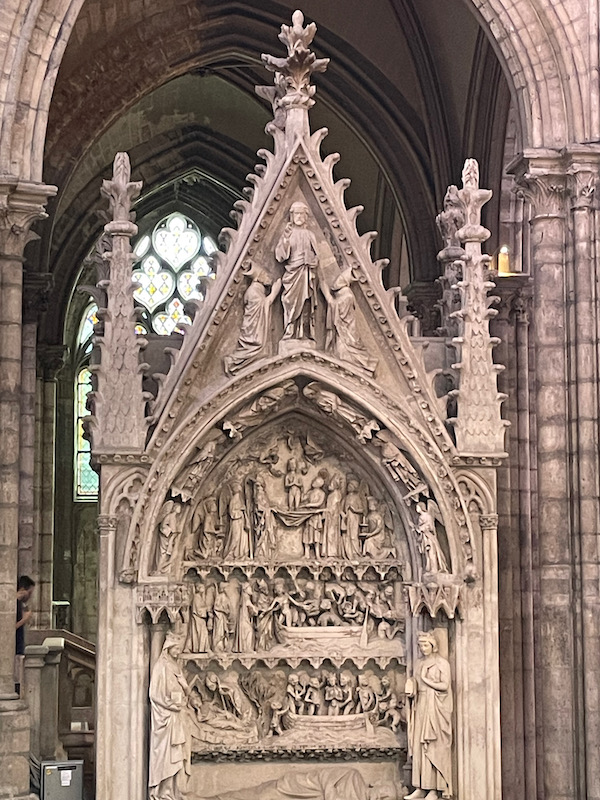
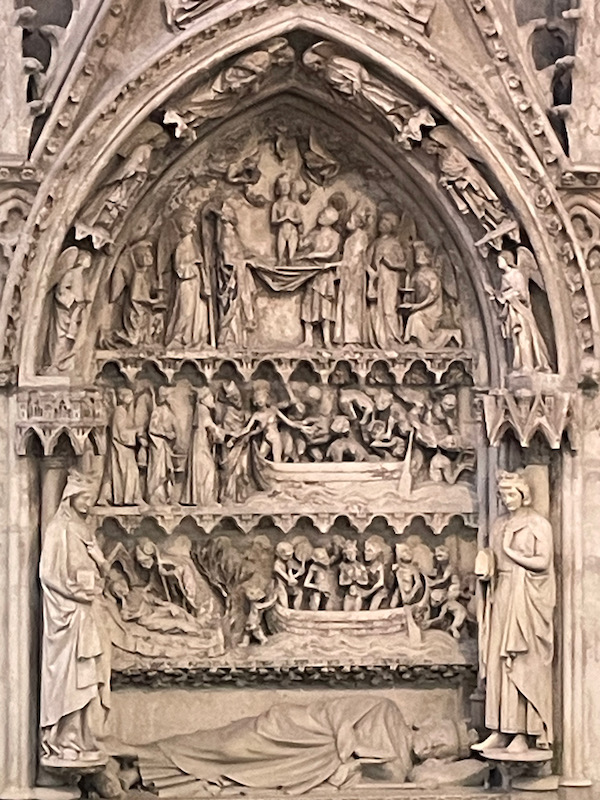
This 13th-century stone painted altarpiece shows the childhood of Christ, (moving left-to-right): the Nativity, the visit of the 3 kings, the Virgin with the infant, the massacre of the innocents, and the flight to Egypt.
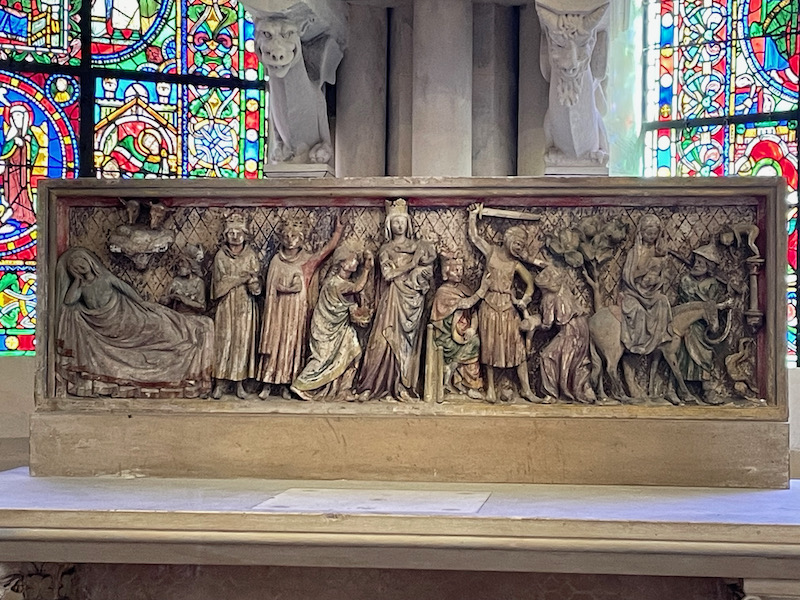
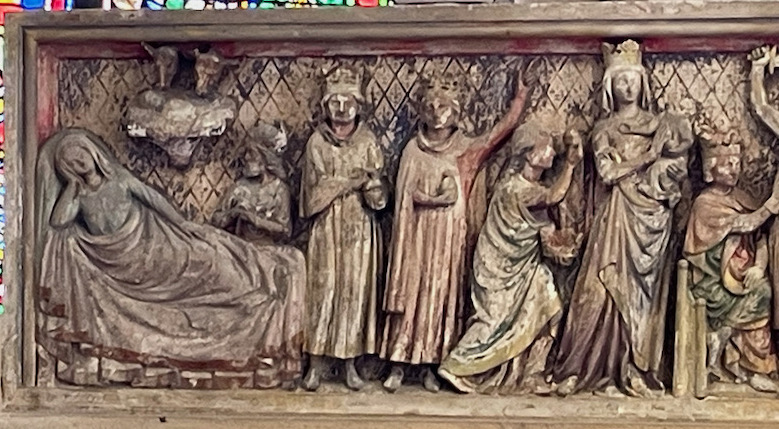
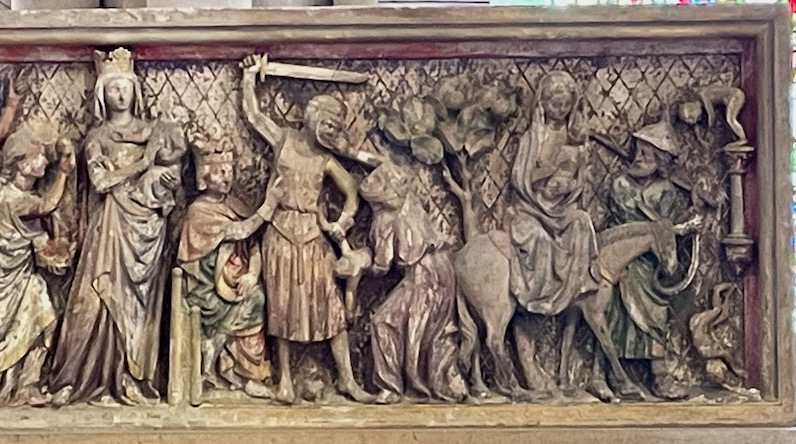
A few more, these 3 in marble done around 1327. The outer 2 are Philippe V "the Long" and Charles IV "the Fair", while the middle one is Jeanne d'Evreux, the 3rd wife of Charles IV.
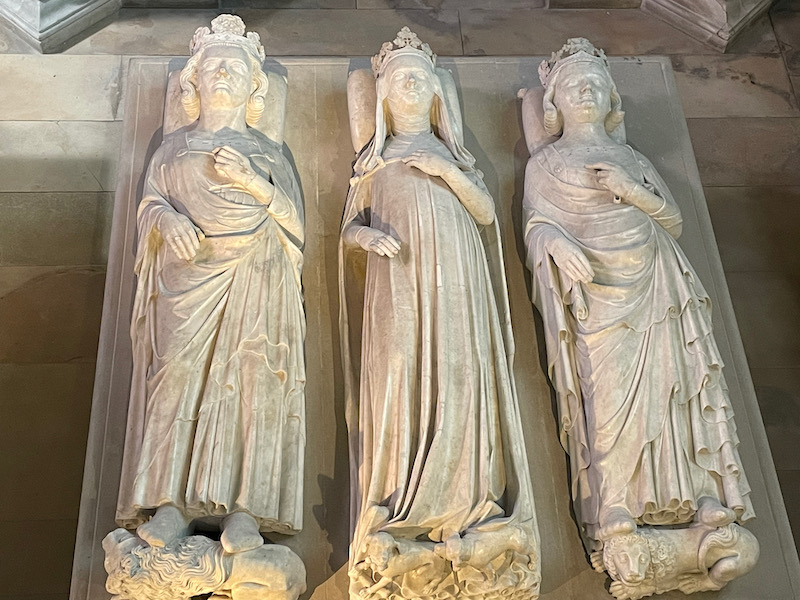
This is one of the largest and most impressive monuments in the Basilica. It belongs to King Henri II and his wife, Catherine de Médicis. Henry II married Catherine de Medici, Duchess of Urbino, in 1533 and then was crowned in 1547. They ruled for 12 years before he accidentally got a piece of a shattered lance in the eye during a jousting tournament in 1559 and died 10 days later. In mourning, Catherine wanted to make it a mausoleum to house the burial of Henry II and their children (they had 8 children together including the future kings Francis II, Charles IX, and Henry III). She died in 1589, 30 years after her husband and after the death of several of her children who would become king as well. It has the appearance of an ancient temple and shows the king and queen twice: kneeling on top praying, and laying naked inside. The four bronze statues at the corners of the tomb represent the cardinal virtues, Fortitude, Justice, Temperance and Prudence. Their execution is typical of Mannerist art, an artistic movement of the late Renaissance.
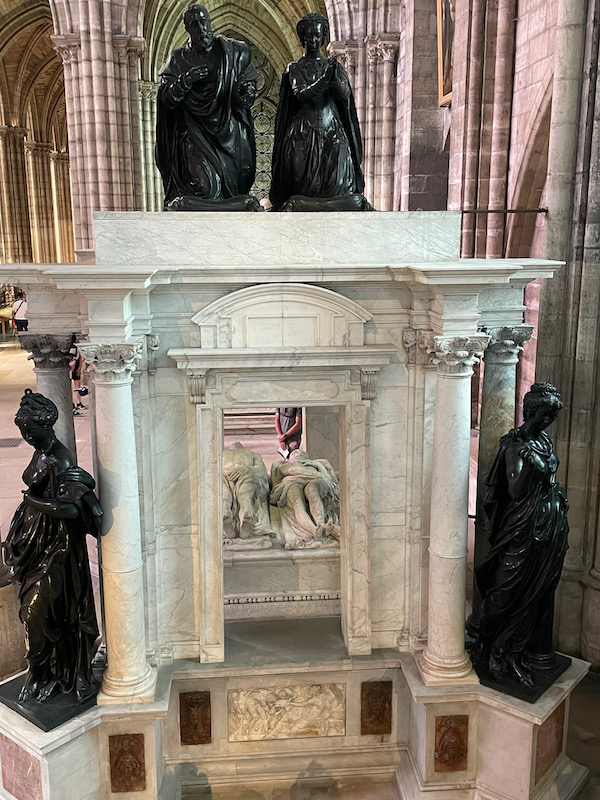
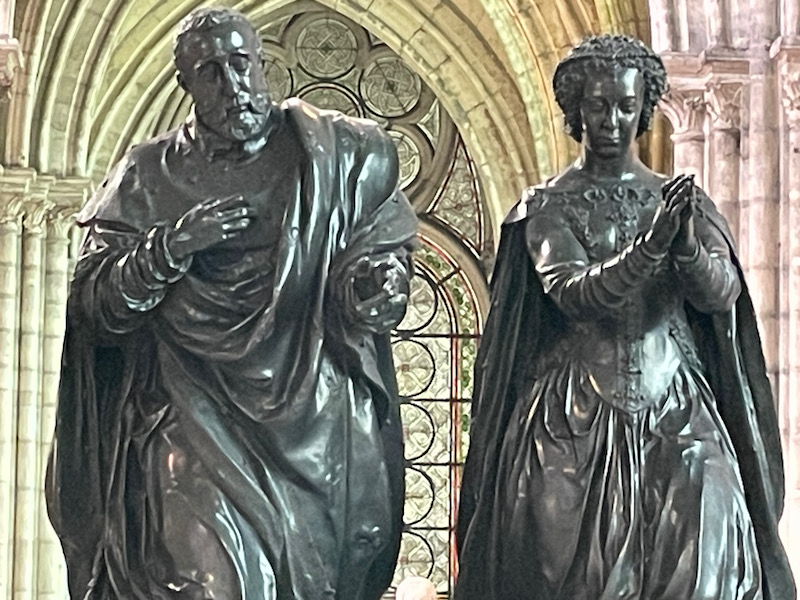
Another impressive one is that of King Louis XII (king from 1498-1515) and his wife, Anne of Bretagne. The tomb's monumentality breaks from traditional medieval representations, and is influenced by classical sources, especially Roman. While the naked body of Henry II was more of how he would have liked to look, Louis is shown in the interior as a gaunt, rotting and naked recumbent cadaver, his head resting on a stone pillow. His death mask is a remarkably realistic depiction of the recently dead: his eyes are sunken into his skull, his skin is taut, his neck is especially emaciated, and his hair is very thin. The arches of the tomb contains a number of groupings of seated figures, including apostles and figures representing the 7 cardinal virtues.
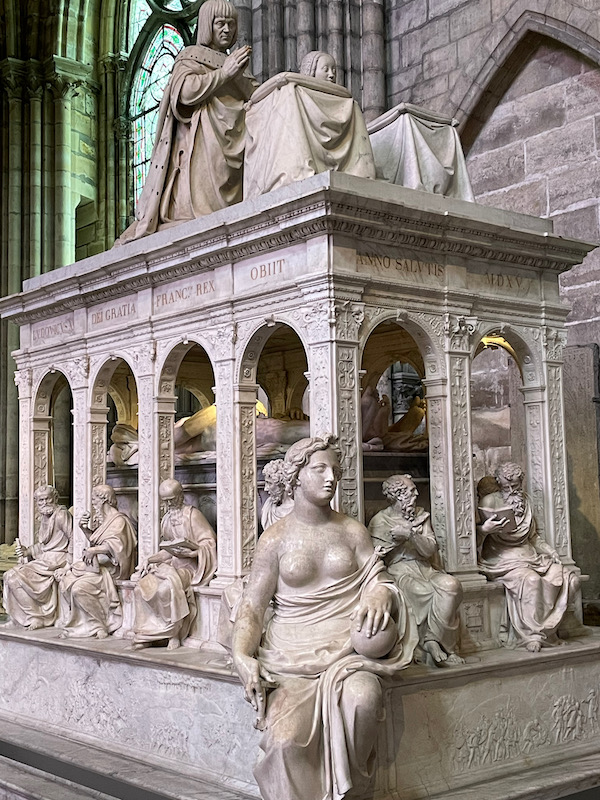
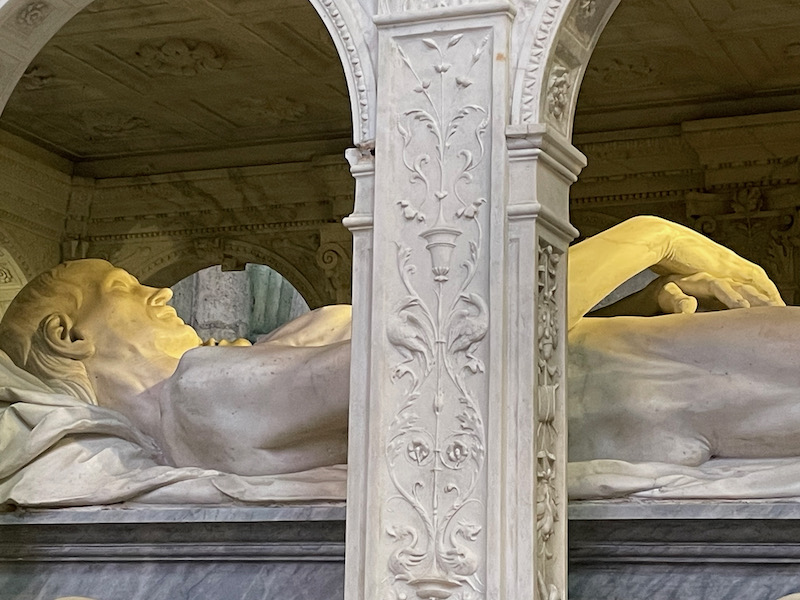
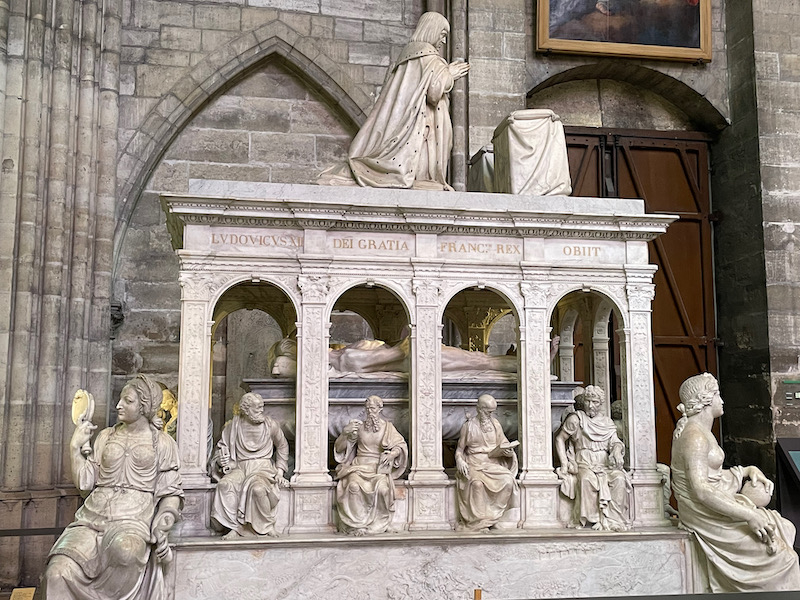
While most of the tombs are just white marble or stone, a few of them still have some color. The first one is painted while the 2nd has dark blue stone behind the carved figures.
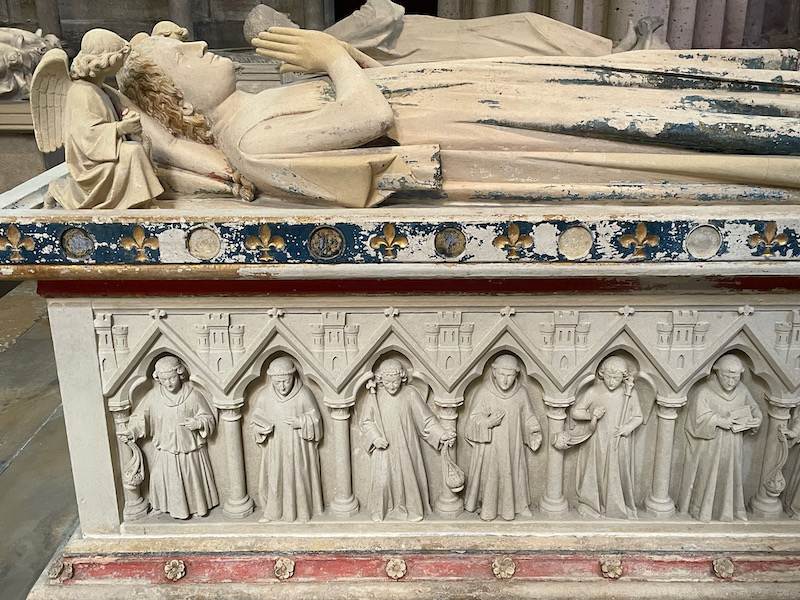
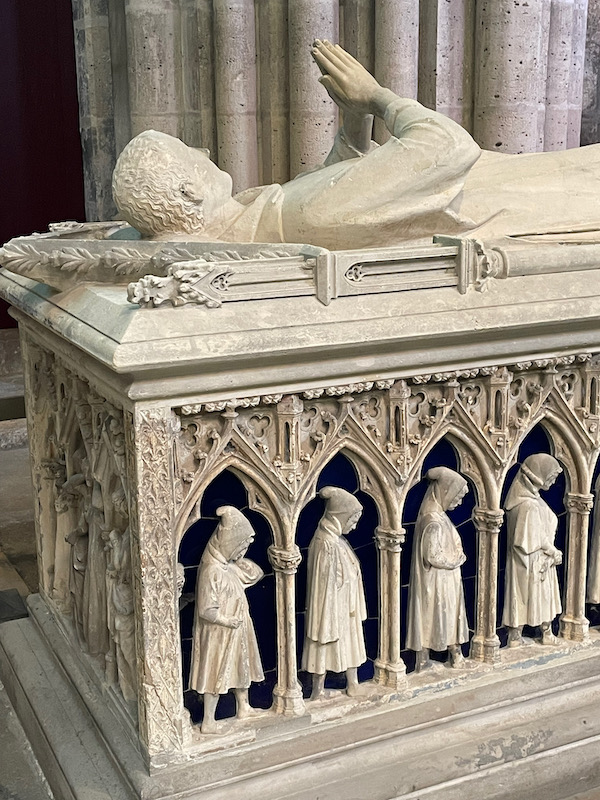
The choir stalls date from the 16th century and are a mixture of carved bas-relief panels and panels that have inlaid wood.
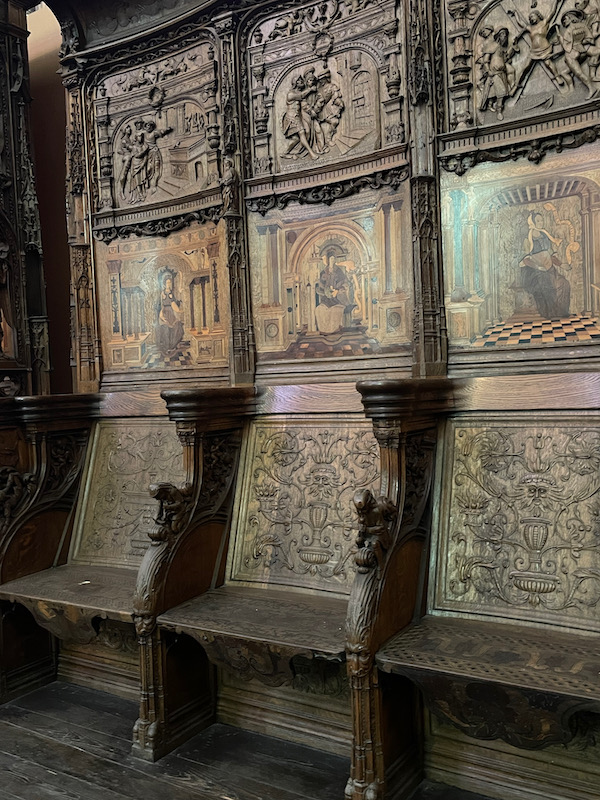
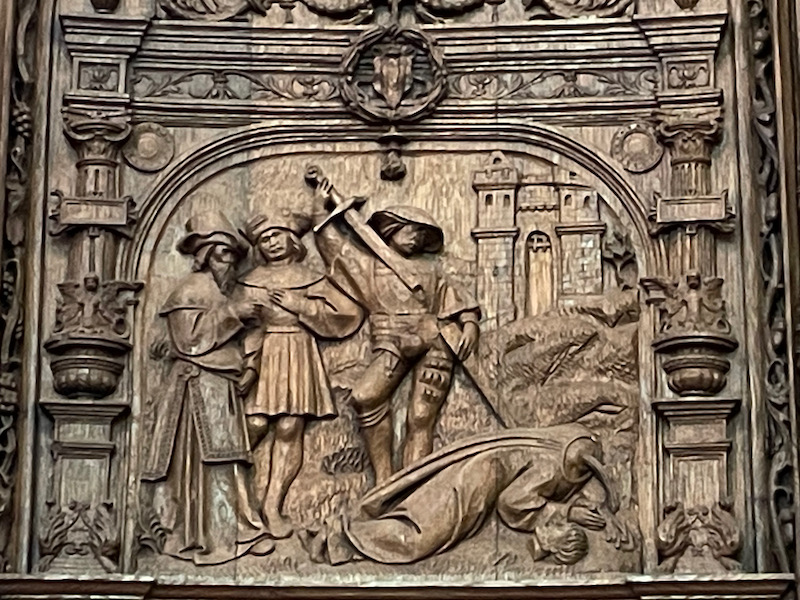
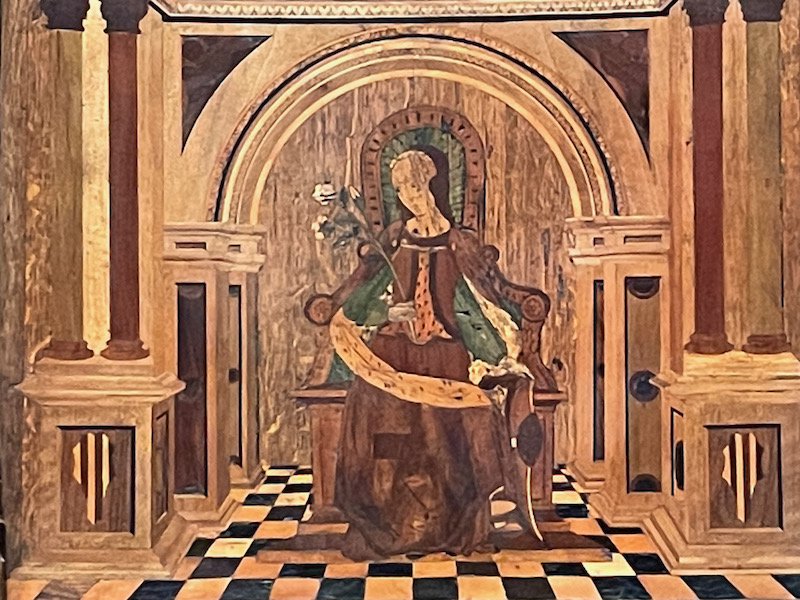
As you are reading, you are probably wondering where the stained-glass windows are! Here are just a few examples, most of which date from the 19th century (the medieval stained-glass windows from the 12th century were removed for cleaning but were too fragile to actually put back up, so copies were put in their place. The South Rose Window has the central figure of the blessing God, surrounded by a ring of angels, then the 12 signs of the zodiac representing the course of the sun, and then 24 agricultural tasks carried out during the year around the outside. The North Rose Window represents the Tree of Jesse.
